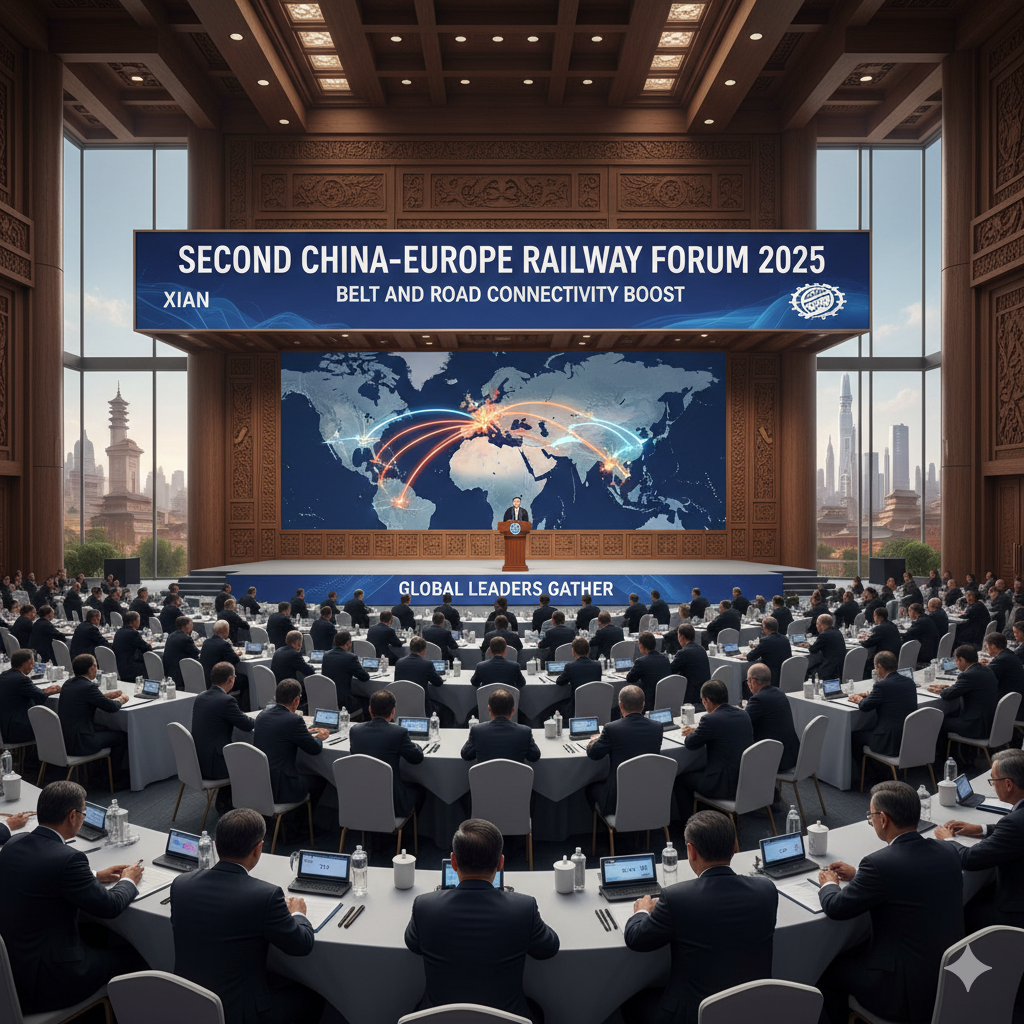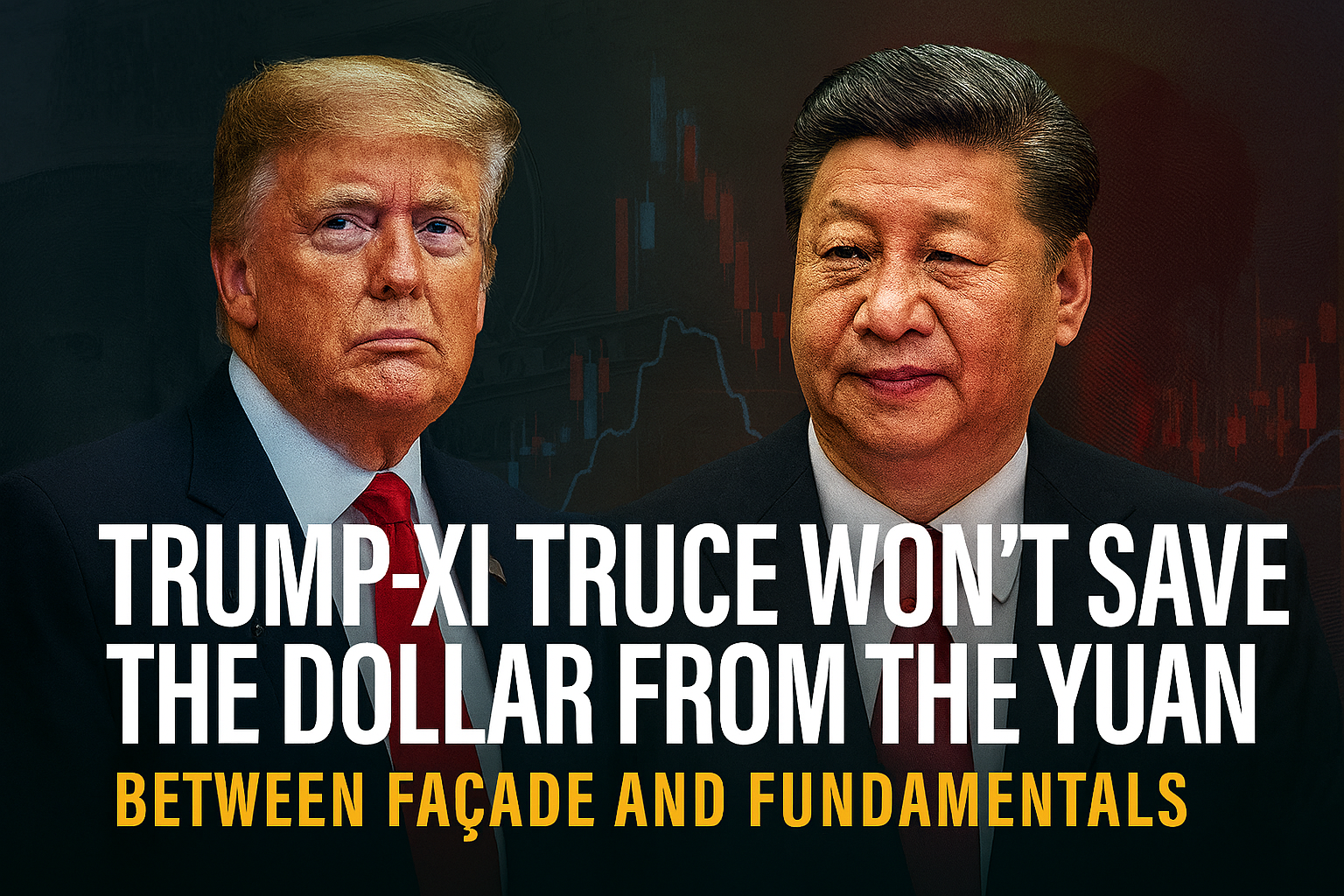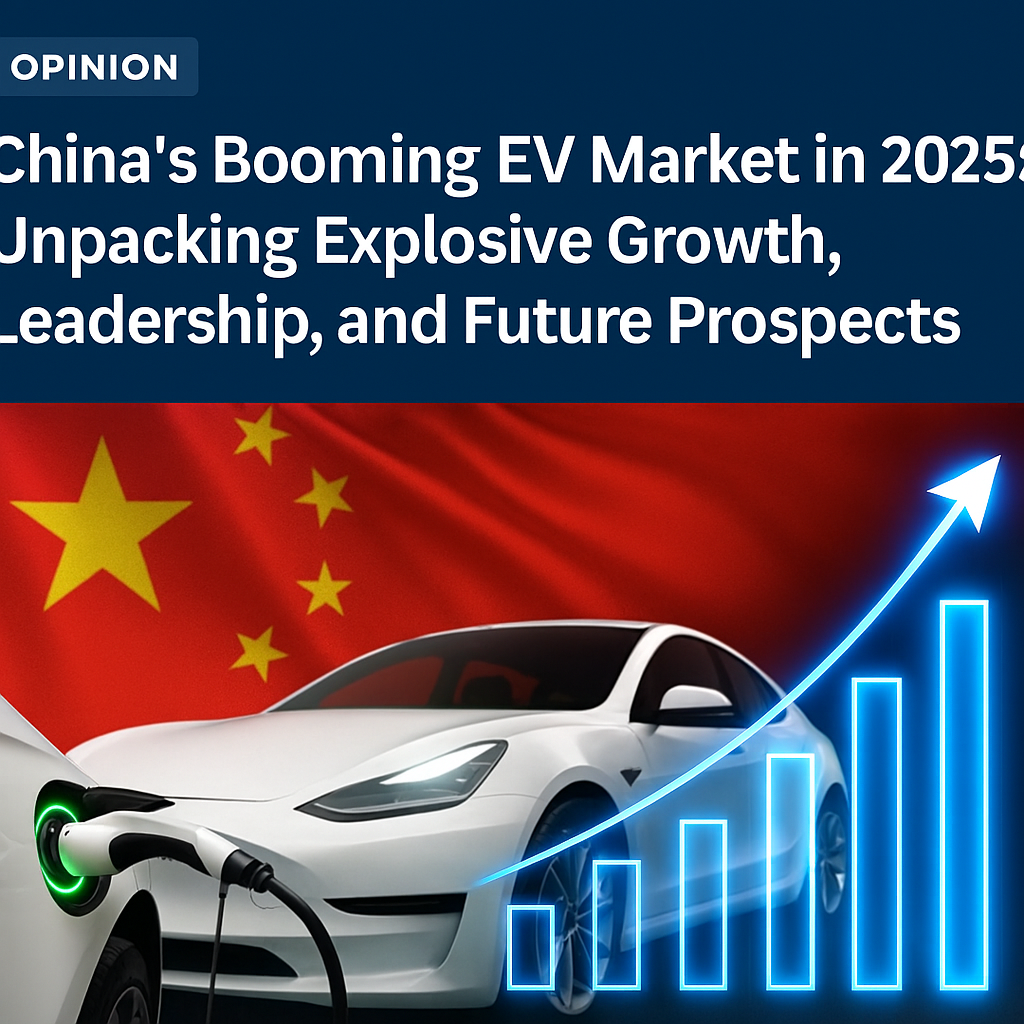China
Second China-Europe Railway Forum 2025: Xi’an Hosts Global Leaders for Belt and Road Connectivity Boost

Xi’an, China – November 13, 2025 – In a landmark move for Eurasian trade and logistics, the ancient city of Xi’an is set to become the epicenter of innovation as it hosts the Second China-Europe Railway Express Cooperation Forum from November 18-20, 2025. Announced by China’s National Development and Reform Commission (NDRC), this high-profile event promises to accelerate the China-Europe Railway Express—a vital artery of the Belt and Road Initiative (BRI)—delivering faster, greener, and more reliable freight connections between Asia and Europe.
If you’re tracking the future of international rail freight, Eurasian supply chains, or sustainable logistics, this forum is unmissable. With freight volumes surging 20% year-over-year on key routes, the event arrives at a pivotal moment for global trade amid geopolitical shifts and rising demand for eco-friendly transport alternatives to air and sea shipping.
Why the China-Europe Railway Express Matters in 2025
The China-Europe Railway Express, operational since 2011, has revolutionized cross-continental cargo movement. Trains now zip from cities like Chongqing and Chengdu to European hubs such as Duisburg and Madrid in just 12-15 days—half the time of maritime routes. Last year alone, over 17,000 trains carried 1.7 million TEUs (twenty-foot equivalent units), underscoring its role in resilient global supply chains.
Hosted in Xi’an—the historic starting point of the ancient Silk Road—this forum builds on the inaugural 2023 event in Lianyungang, which drew 500+ delegates and sparked collaborations worth billions. Under the theme “Connecting Asia and Europe for a Shared Future”, expect deep dives into:
- Enhancing safety and efficiency: Strategies for “bulletproof” rail systems amid increasing volumes.
- Expanding trade corridors: New routes through Central Asia, the Middle East, and beyond to diversify beyond traditional paths.
- Green innovation in logistics: Low-carbon tech, electric locomotives, and digital twins for sustainable BRI growth.
Agenda Highlights: What to Expect at the Xi’an Forum
The three-day extravaganza kicks off with a star-studded opening ceremony featuring speeches from NDRC officials, EU transport ministers, and BRI partners. Parallel sessions will ignite discussions on:
- Ultra-Efficient Transport Systems: Exploring AI-driven scheduling, automated customs clearance, and high-speed upgrades to handle 2 million+ TEUs annually by 2030.
- Diverse Trade Corridors: Mapping untapped routes like the New Eurasian Land Bridge, with spotlights on Kazakhstan, Poland, and emerging African extensions.
- Integrated Development Breakthroughs: From blockchain for secure tracking to renewable energy powering rail hubs—unlocking $100B+ in BRI investments.
Live demos, B2B matchmaking, and networking galas will connect freight forwarders, policymakers, and tech innovators. Past attendees rave about tangible outcomes, like the 2023 forum’s MoUs that boosted rail freight by 15% on key lines.
Key Forum Stats Details Date November 18-20, 2025 Location Xi’an International Convention Center, Shaanxi Province Expected Attendees 800+ from 50+ countries Focus Areas Rail Safety, New Corridors, Green Tech Predecessor Success 2023 Lianyungang event: 500 delegates, 20+ partnerships
Xi’an: Where History Meets High-Speed Future
As Shaanxi’s capital and UNESCO World Heritage site, Xi’an blends Terra Cotta Warriors grandeur with modern rail prowess. Home to the Xi’an Dry Port—handling 1M+ TEUs yearly—it’s a natural fit for this Belt and Road milestone. Visitors can tour the Silk Road Museum post-forum, tying ancient trade vibes to today’s China-Europe freight revolution.
Join the Momentum: Register Now for the China-Europe Railway Forum
Whether you’re a logistics exec eyeing Eurasian rail opportunities or a policy wonk passionate about sustainable BRI projects, secure your spot via the official NDRC portal. Early bird registration closes November 15—don’t miss riding the rails to a connected tomorrow!
For more on China-Europe trade trends, Belt and Road updates, or global logistics news, subscribe to our newsletter. Share your thoughts: How will this forum shape international freight in 2026? Comment below!
Sources: NDRC Press Release, Belt and Road Portal. Images: Courtesy of Xi’an Convention Bureau (alt: “High-speed freight train on China-Europe Railway Express route”).
Business
Trump-Xi Truce Won’t Save the Dollar from the Yuan

A temporary handshake in Busan cannot disguise the deeper structural erosion of dollar dominance and the steady, deliberate rise of the yuan.
When Donald Trump and Xi Jinping emerged from their October summit in Busan, markets reacted with the usual mix of relief and scepticism. Gold ticked up 1.2%, Asian equities softened, and U.S. futures wobbled—hardly the euphoric rally one might expect from what Trump called “a 12 out of 10” meeting. The deal, which paused Chinese rare-earth export controls and promised renewed soybean purchases, was hailed as a “historic truce” by the White House. Yet the muted market response told a deeper truth: investors know that this is theater, not transformation.
The core thesis is simple: this truce does nothing to alter the structural trajectory of global finance. The dollar’s dominance is eroding under the weight of U.S. fiscal excess and its own weaponization, while the yuan’s internationalisation—though gradual—is accelerating. The world is not waiting for Washington or Beijing to declare peace; it is already moving toward a multipolar currency order.
1: The ‘Trucified’ Mirage
The Busan agreement was transactional diplomacy at its most transparent. China agreed to suspend rare-earth export controls for a year, resume large-scale agricultural imports, and ease pressure on U.S. semiconductor firms. In return, Washington halved certain tariffs and promised to “re-engage” on technology licensing. Both sides declared victory, but the underlying rivalry remains untouched.
This is not the first time markets have been asked to celebrate a ceasefire in the U.S.-China economic war. Recall the “Phase One” deal of 2020, which promised massive Chinese purchases of U.S. goods that never fully materialised. The pattern is familiar: temporary concessions, symbolic gestures, and a brief pause in escalation. What is never addressed are the structural drivers of conflict—China’s ambition to dominate advanced technologies, Washington’s bipartisan consensus on decoupling, and the geopolitical competition stretching from the South China Sea to Africa.
The truce is a mirage because it assumes that transactional fixes can mask strategic divergence. They cannot. The U.S. is not going to stop restricting Chinese access to advanced chips, nor will Beijing abandon its push for technological self-sufficiency. Investors who mistake this truce for stability are ignoring the tectonic forces at play. The rivalry is permanent; the truce is temporary.
2: The Dollar’s Self-Inflicted Wounds
If the yuan is rising, it is not only because of Beijing’s ambition but also because of Washington’s missteps. Two structural risks stand out: fiscal profligacy and the weaponisation of the dollar.
First, the fiscal picture. U.S. federal debt has surged to over $36 trillion in 2025, according to the St. Louis Fed, up from roughly $18 trillion a decade ago. Debt-to-GDP now hovers near 125%, levels typically associated with emerging markets in crisis rather than the world’s reserve currency issuer. Investors may tolerate high debt for a time, but persistent deficits erode confidence in the dollar’s long-term purchasing power.
Second, the weaponization of the dollar has accelerated since 2014, when sanctions on Russia highlighted the risks of overreliance on the greenback. The freezing of Russian central bank reserves in 2022 was a watershed moment. Allies and adversaries alike saw that dollar assets could be rendered unusable overnight if Washington disapproved of their policies. This has spurred diversification.
The data is clear: the dollar’s share of global foreign exchange reserves has slipped from 66% in 2015 to around 58% in 2025, according to IMF data. That decline may look modest, but in a $12 trillion reserve universe, it represents hundreds of billions shifting into euros, yen, gold, and increasingly, yuan.
The irony is that Washington’s own policies—fiscal recklessness and sanctions overreach—are accelerating the very de-dollarisation it fears. The dollar is not collapsing, but its aura of invincibility is fading.
3: The Yuan’s Quiet Ascent
While Washington undermines its own currency, Beijing is methodically building the yuan’s global footprint. This is not a frontal assault on dollar hegemony but a patient campaign of incremental gains.
Consider trade settlement. According to DW, nearly one-third of China’s $6.2 trillion trade in 2025 is now settled in yuan, up from just 20% in 2022. This shift is particularly pronounced in energy: Chinese refiners are increasingly paying for Russian oil and Middle Eastern gas in yuan, bypassing the dollar entirely.
Financial infrastructure is another front. The Cross-Border Interbank Payment System (CIPS), Beijing’s alternative to SWIFT, now processes trillions in annual transactions. While still smaller than SWIFT, it provides a sanctions-proof channel for yuan payments. At the same time, the digital yuan is being piloted in cross-border settlements, offering a programmable, state-backed alternative to dollar clearing.
Foreign holdings of yuan assets are also climbing. SWIFT data shows the yuan recently overtook the Japanese yen to become the fourth most-used currency in global payments, with a record 4.6% share. That may seem small compared to the dollar’s 40%+ share, but the trajectory is unmistakable.
The constraint, of course, remains China’s capital account controls. Beijing is unwilling to fully liberalize for fear of destabilizing capital flight. Yet even within these limits, yuan internationalization is advancing. Currency swaps with over 40 central banks, commodity contracts priced in yuan, and the steady rise of yuan-denominated bonds in Hong Kong all point to a currency whose global role is expanding, not retreating.
The yuan will not replace the dollar tomorrow. But its ascent is relentless—and irreversible.
4: The Path to a Multipolar Currency World
The real story is not a binary contest between dollar and yuan but the emergence of a multipolar currency system. The euro remains a formidable reserve currency, accounting for roughly 20% of global reserves. Emerging markets are increasingly settling trade in local currencies, while BRICS+ nations are openly discussing alternatives to the dollar in energy trade. The yuan is the most dynamic challenger, but it is part of a broader trend: the fragmentation of global finance into overlapping blocs. The unipolar dollar era is ending; the multipolar era is beginning.
Conclusion
The Trump-Xi truce is a headline, not a turning point. The forces reshaping global finance are structural, not cyclical. America’s debt addiction and sanctions diplomacy are eroding trust in the dollar, while China’s deliberate yuan strategy is bearing fruit. The result will not be a sudden dethronement but a gradual rebalancing toward a multipolar currency world.
Policymakers in Washington may celebrate temporary truces, but investors should look past the photo ops. The dollar’s dominance is no longer guaranteed. The yuan’s rise is not a question of if, but how fast.
Auto
China’s Booming EV Market in 2025: Unpacking Explosive Growth, Leadership, and Future Prospects

China’s electric vehicle (EV) market is witnessing an unprecedented surge in 2025, positioning the country as the global leader in new energy vehicle (NEV) adoption and innovation. Recent data shows remarkable trends that highlight China’s rapid growth in this sector, promising an exciting future for EVs domestically and internationally.
Robust Growth in NEV Sales
In the first half of 2025 alone, China’s passenger vehicle sales climbed to approximately 10.9 million units, marking a solid 10.7% year-over-year increase. This growth is overwhelmingly driven by New Energy Vehicles, which surged 33% to about 5.46 million units sold. Notably, traditional internal combustion engine (ICE) vehicle sales declined by 5.2% during the same period. This shift underscores a transforming market, where NEVs now make up more than half—50.1%—of the passenger vehicle market, surpassing conventional cars for the first time.
Battery electric vehicles (BEVs) lead this charge, experiencing a 37.6% sales increase to 3.33 million units, outpacing plug-in hybrids (PHEVs), which grew 26.5%. BEVs now command 61% of NEV sales, a trend illustrating a clear preference for fully electric transport solutions in the Chinese market.
China’s Market Leadership and Export Expansion
China is not just dominating its own EV market but also making a significant impact globally. In 2025, Chinese EV manufacturers exported vehicles to over 200 countries, generating nearly $48 billion in revenue. Europe remains the primary destination, accounting for about half of all exports, with emerging markets in Asia, Latin America, the Middle East, and Africa rapidly increasing their adoption of Chinese-made EVs. Exports to Africa grew by an astonishing 184% year-over-year, showcasing the expanding global footprint of China’s EV industry.
Government Policies and Industry Evolution
China’s government has played a vital role in nurturing the EV boom, initially through subsidies and purchase incentives that spurred mass adoption. However, 2025 marks a strategic turning point. The government has signaled the end of direct subsidies and omitted EVs from the list of key strategic industries in the latest five-year development plan (2026-2030). This move reflects confidence in the sector’s maturity and readiness to compete without heavy-handed support, shifting towards market-driven growth and international competitiveness. While these changes may induce some industry restructuring, they also present opportunities for innovation and consolidation among leading manufacturers.
Future Prospects and Challenges
Looking ahead, the Chinese EV market is poised for exponential growth, underpinned by continuous technological advancements and increasing consumer acceptance. The full-year forecast for 2025 estimates NEV sales to reach around 15.5 million vehicles, accounting for nearly half of all passenger vehicles sold.
Nonetheless, challenges remain. The industry must navigate reduced government subsidies, rising competition, and the need to sustain export momentum amid global trade tensions. Additionally, transitioning from plug-in hybrids to pure battery electric vehicles will require sustained innovation, especially in battery technology and infrastructure development.
Conclusion
China’s EV market is a compelling story of transformation and leadership. With NEV sales surpassing half of the domestic market and exports penetrating every major global region, China is reshaping the automotive landscape. As subsidies fade, the strength of this sector will increasingly depend on innovation, consumer demand, and its ability to adapt to global market dynamics. For anyone observing the future of transportation, China’s journey is a vivid example of exponential growth driven by vision, policy, and technological progress—all unfolding in real time.
This dynamic market evolution not only sets the tone for global EV trends but also paves the way for a cleaner, electrified future powered by innovation and sustainable mobility.
Business
China’s State-Backed Developers See Earnings Growth Amidst Home Delivery Safety Trend

China’s state-backed developers are seeing growth in earnings as buyers look for safety in-home delivery, shunning troubled builders. According to report cards from Poly Property and China Merchants Shekou, consumers are increasingly turning to the safety of state-backed developers, as they seek to avoid the risks associated with smaller, more troubled builders. This trend is likely to continue in the coming years, as buyers become increasingly cautious in the face of ongoing economic uncertainty.

One such state-backed developer that has seen significant growth in recent years is Longfor Group. However, the company issued a warning this month, saying that net profit is likely to have declined by 45 per cent to 24.4 billion yuan in 2023. Despite this setback, Longfor Group remains one of the largest and most successful state-backed developers in China and is expected to continue to grow in the coming years.
Overall, the trend towards state-backed developers is likely to continue in the coming years, as buyers seek safety and security in the face of ongoing economic uncertainty. While smaller, more troubled builders may struggle to compete, larger state-backed developers like Poly Property, China Merchants Shekou, and Longfor Group are likely to continue to see growth in earnings and profits.
Earnings Growth of State-Backed Developers

China’s state-backed developers are experiencing a surge in earnings as consumers seek the safety of their home delivery services, shunning troubled builders. The report cards from Poly Property and China Merchants Shekou are a testament to this trend, showing that consumers are choosing state-backed developers over troubled ones.
Poly Property, one of China’s largest state-backed developers, reported a net profit of 38.7 billion yuan ($5.6 billion) in 2023, up 35% year-on-year. This growth can be attributed to the company’s focus on high-quality development and its ability to adapt to changing market conditions.
Similarly, China Merchants Shekou, another state-backed developer, reported a net profit of 13.3 billion yuan ($1.9 billion) in 2023, up 26% year-on-year. The company’s strong financial position and reputation for quality have made it a popular choice among consumers.
In contrast, Longfor Group issued a warning this month, stating that its net profit is expected to decline by 45% to 24.4 billion yuan in 2023. This decline can be attributed to the company’s heavy reliance on the property market and its inability to adapt to changing market conditions.
Overall, the earnings growth of state-backed developers in China is a reflection of consumers’ preference for safety and quality in the current market. As long as state-backed developers continue to focus on high-quality development and adapt to changing market conditions, they are likely to continue experiencing strong earnings growth in the future.
Consumer Confidence in Home Delivery

Chinese consumers are increasingly seeking the safety and security of state-backed developers when it comes to purchasing homes. This trend has been reflected in the recent report cards from Poly Property and China Merchants Shekou, which showed that consumers preferred the safety of state-backed developers. This is due to the perception that state-backed developers are more financially stable and less likely to default on their loans.
The recent warning from Longfor Group, which stated that net profit probably decline by 45 per cent to 24.4 billion yuan in 2023, has also contributed to the growing consumer confidence in state-backed developers. Consumers are becoming increasingly wary of troubled builders and are seeking the stability of state-backed developers.
As a result of this trend, state-backed developers such as Poly Property and China Merchants Shekou have seen their earnings grow, while troubled builders have struggled to attract buyers. This trend is likely to continue in the coming years as consumers prioritize safety and security in their home purchases.
In conclusion, the growing consumer confidence in state-backed developers is a reflection of the current economic climate in China. Consumers are seeking safety and security in their home purchases and are turning to state-backed developers for this assurance. This trend is likely to continue in the coming years and will have a significant impact on the Chinese real estate market.
Challenges for Troubled Builders

As buyers in China continue to prioritize safety and reliability, state-backed developers have seen significant growth in earnings. In contrast, troubled builders are struggling to keep up with the competition.
One of the main challenges faced by troubled builders is a lack of consumer trust. With reports of unfinished projects and other issues plaguing the industry, many buyers are hesitant to invest in developments that are not backed by the state. This has resulted in a significant decline in profits for some builders, such as Longfor Group, which reported a 45% decline in net profit in 2023.
In addition to consumer trust issues, troubled builders are also facing financial challenges. Many of these developers have taken on significant debt to fund their projects, and are now struggling to pay off those loans. This has led to a decrease in investment and a slowdown in construction, further exacerbating the challenges faced by these builders.
Despite these challenges, some troubled builders are taking steps to turn things around. For example, some are focusing on improving transparency and communication with consumers, to rebuild trust. Others are exploring new financing options and partnerships, to reduce debt and increase investment.
Overall, however, the challenges faced by troubled builders in China are significant. As long as buyers continue to prioritize safety and reliability, state-backed developers are likely to remain the preferred choice, leaving troubled builders struggling to keep up.
Financial Performance Warnings

Poly Property Report Card
Poly Property, a state-backed developer in China, recently released its report card showing that consumers preferred the safety of state-backed developers. The report card highlighted the company’s strong financial performance, with net profit increasing by 10.8% to 12.3 billion yuan in 2023. The company’s total revenue also increased by 17.6% to 98.9 billion yuan in the same period.
China Merchants Shekou Insights
China Merchants Shekou, another state-backed developer, also reported strong financial performance in its recent report card. The company’s net profit increased by 17.3% to 10.9 billion yuan in 2023, while its total revenue increased by 14.8% to 73.5 billion yuan in the same period. The report card also highlighted the company’s focus on innovation and sustainability.
Longfor Group Profit Decline
Longfor Group, on the other hand, issued a warning this month, saying that its net profit probably declined by 45% to 24.4 billion yuan in 2023. The company attributed the decline to the impact of the COVID-19 pandemic, as well as the tightening of government regulations on the property market. Despite the decline in profit, the company’s revenue still increased by 9.5% to 143.7 billion yuan in the same period.
Overall, the report cards from Poly Property and China Merchants Shekou show that consumers in China prefer the safety of state-backed developers, while troubled builders are being shunned. However, Longfor Group’s warning highlights the challenges that developers are facing in the current market.
-
Digital5 years ago
Social Media and polarization of society
-
Digital5 years ago
Pakistan Moves Closer to Train One Million Youth with Digital Skills
-
Digital5 years ago
Karachi-based digital bookkeeping startup, CreditBook raises $1.5 million in seed funding
-
News5 years ago
Dr . Arif Alvi visits the National Museum of Pakistan, Karachi
-
Digital5 years ago
WHATSAPP Privacy Concerns Affecting Public Data -MOIT&T Pakistan
-
Kashmir5 years ago
Pakistan Mission Islamabad Celebrates “KASHMIRI SOLIDARITY DAY “
-
Business4 years ago
Are You Ready to Start Your Own Business? 7 Tips and Decision-Making Tools
-
China5 years ago
TIKTOK’s global growth and expansion : a bubble or reality ?

























